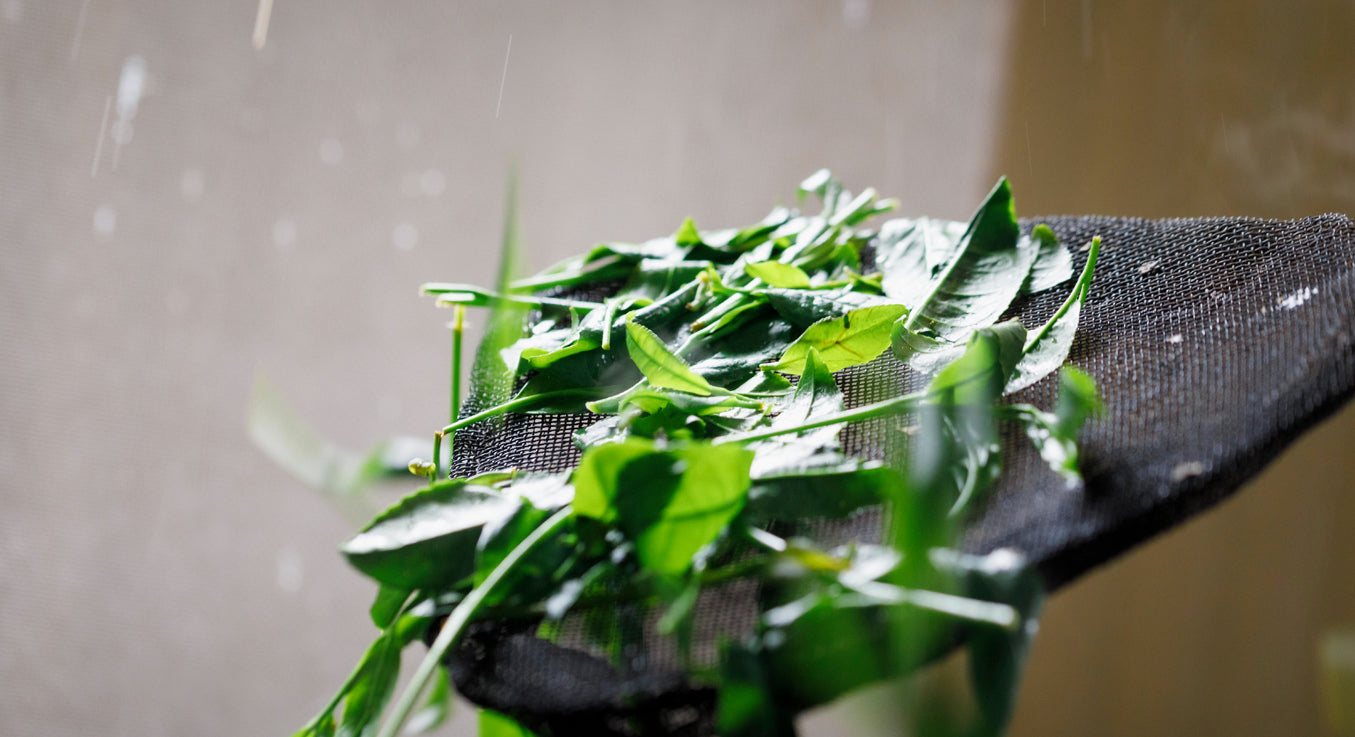About Uji Matcha and Tencha Production
Tencha is the tea that is the raw material for matcha. When new buds sprout, the tea leaves, nurtured in naturally cultivated "Oishita Chaen" rich in fertilizer, are carefully hand-picked, steamed. ("Oishita Chaen" - a cultivation method that cuts sunlight with a shade net for a certain period of time to protect new leaves, producing tea leaves with more sweetness and umami.)
And then they are dried by using a unique tencha roaster called “Tencharo”. These dried tea leaves “Tencha” are called “Uji Tencha”, and if tencha is ground into a powder with a stone mill, it is called "Uji Matcha."
Tea is an Agricultural product.
Hasegawa-Ei Seichajyo, which operates "Chaho Yutoha". is a tencha tea factory that has been in business since the Edo period. In our own tea farms in Uji, Kyoto, we take care of the tea fields throughout the year with heartfelt handwork to make good tencha. Here is how Hasegawa-Ei Seichajyo cultivates high-quality tencha throughout the four seasons.
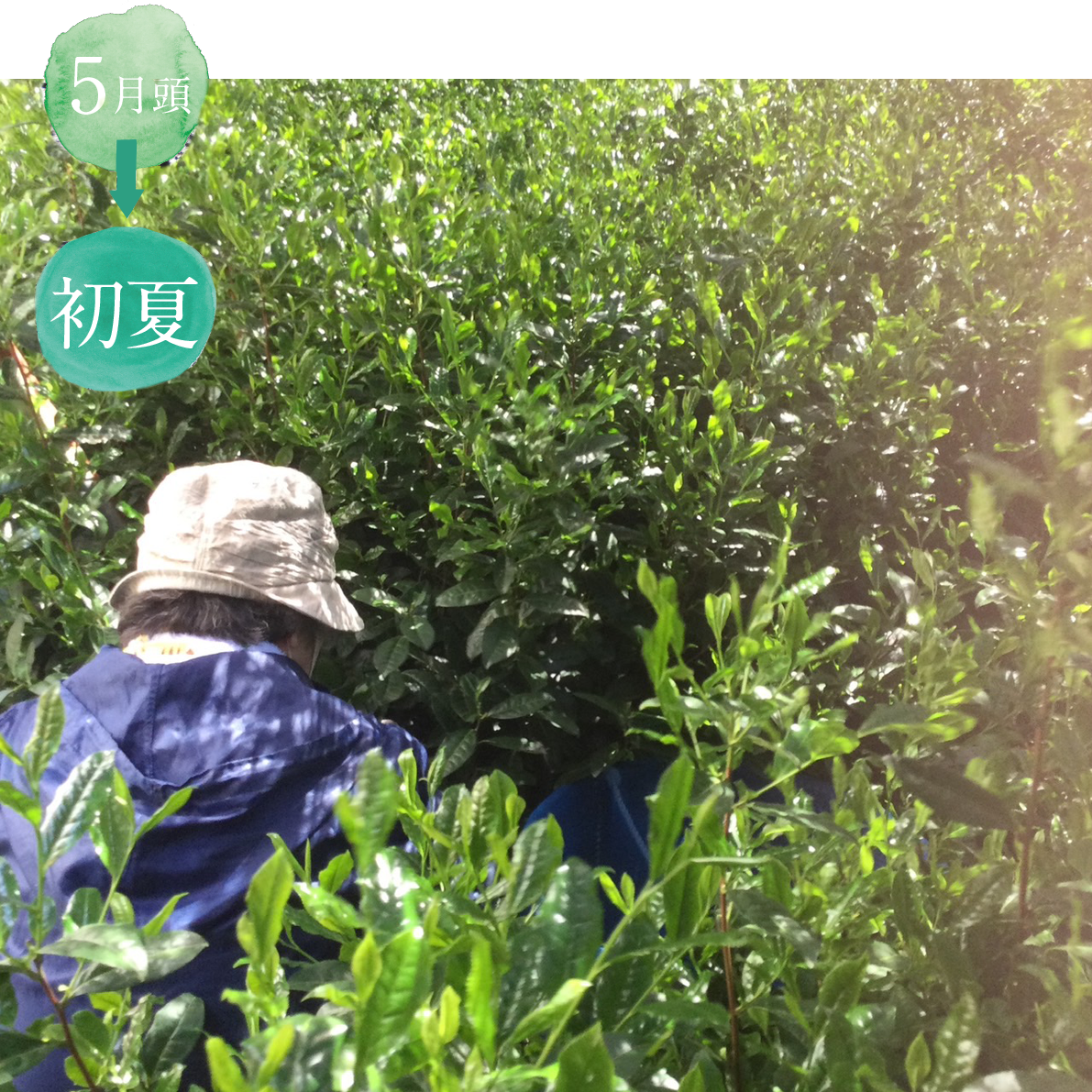
EARLY SUMMER
Tea Picking
Tea picking starts in May. At this time, the tea bushes have grown to about waist height, because we do not prune them, allowing them to grow naturally. The new buds sprout freely all over the bushes, often hiding the tea pickers who are called “Tsumiko” from view, and this is a unique sight in Uji because of the "natural shaping" tea farms. Tsumiko carefully hand-pick the new buds, which are rich in nutrients from the fertilizers applied throughout the year.
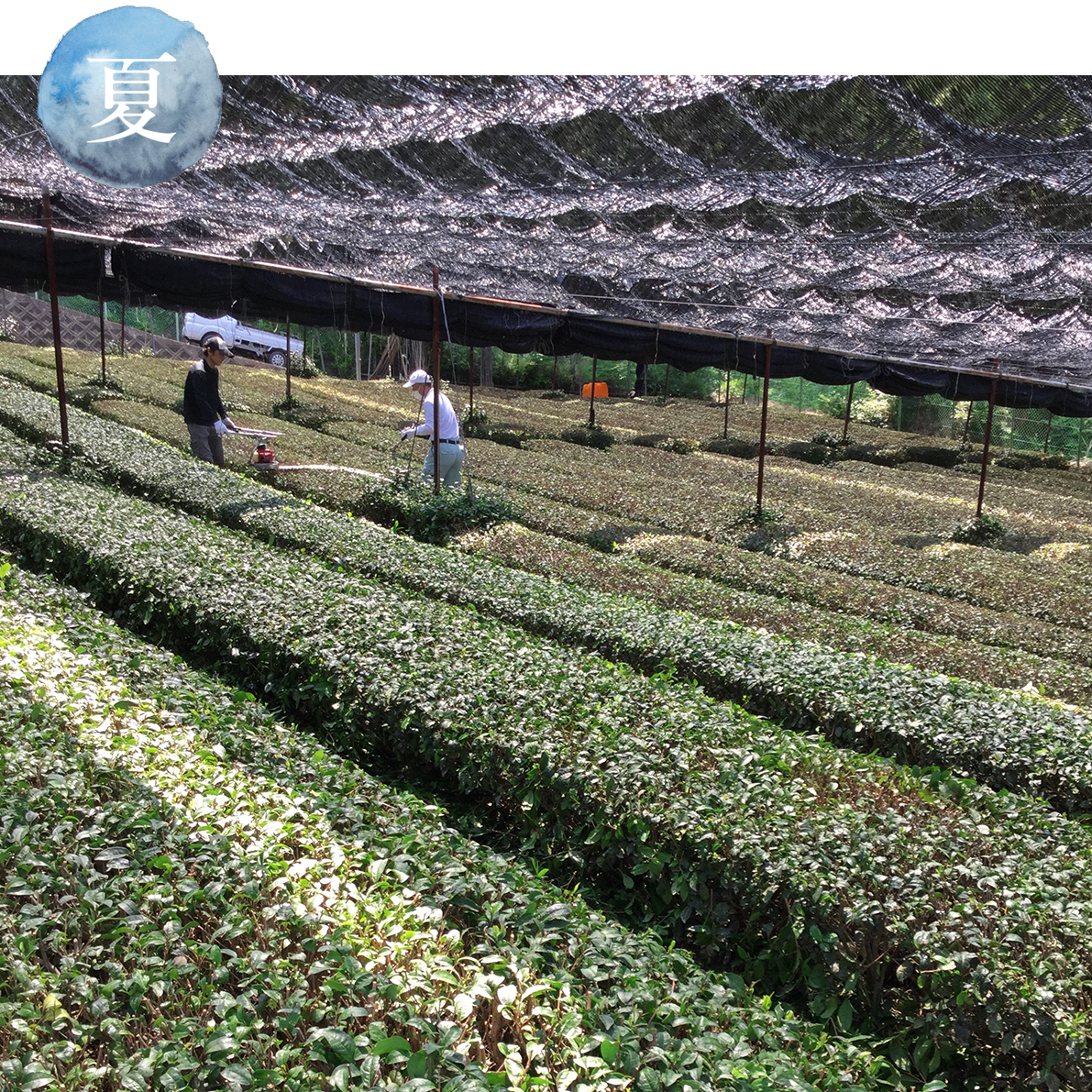
SUMMER
Trimming
After the tea picking, we trim the tea bushes in a process called “Bankari”. The tea plants are weakened by being shaded by long leaves and the new buds being picked, so this trimming is a very important step to allow the nutrients to reach all parts of the weakened bushes and help them recover. In addition, there are other important summer tasks such as opening and closing “Kanreisha” which is a shading net to protect the bushes from the strong sun and manually removing vines and weeds entangled with the tea bushes.
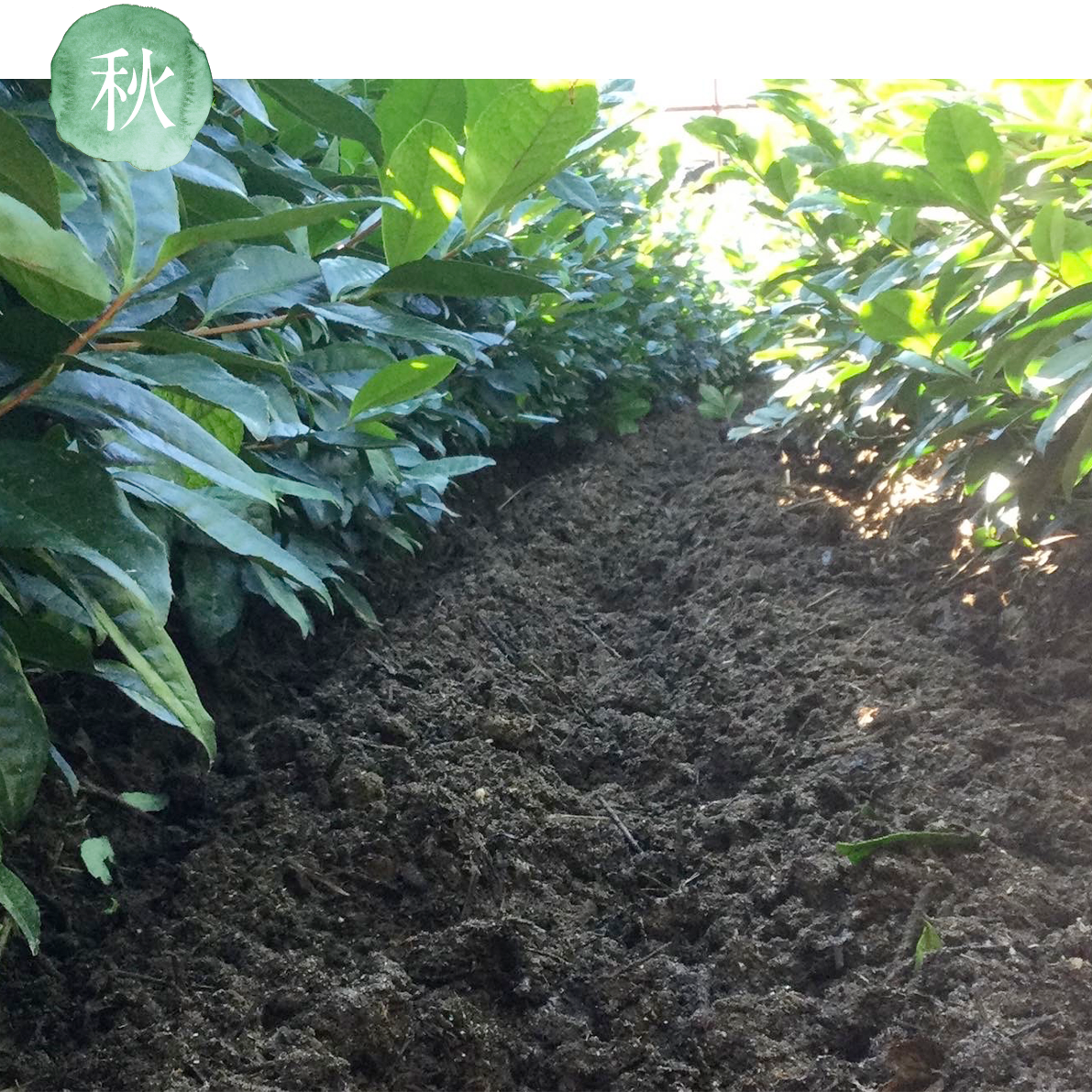
AUTUMN
Fertilizing and Deep Plowing
In autumn, we apply ample fertilizer to ensure the tea bushes store plenty of nutrients. After fertilizing, To promote the growth of roots for the tea bushes and ensure the fertilizer reaches, we thoroughly prepare the soil by loosening the compacted earth through deep cultivation.
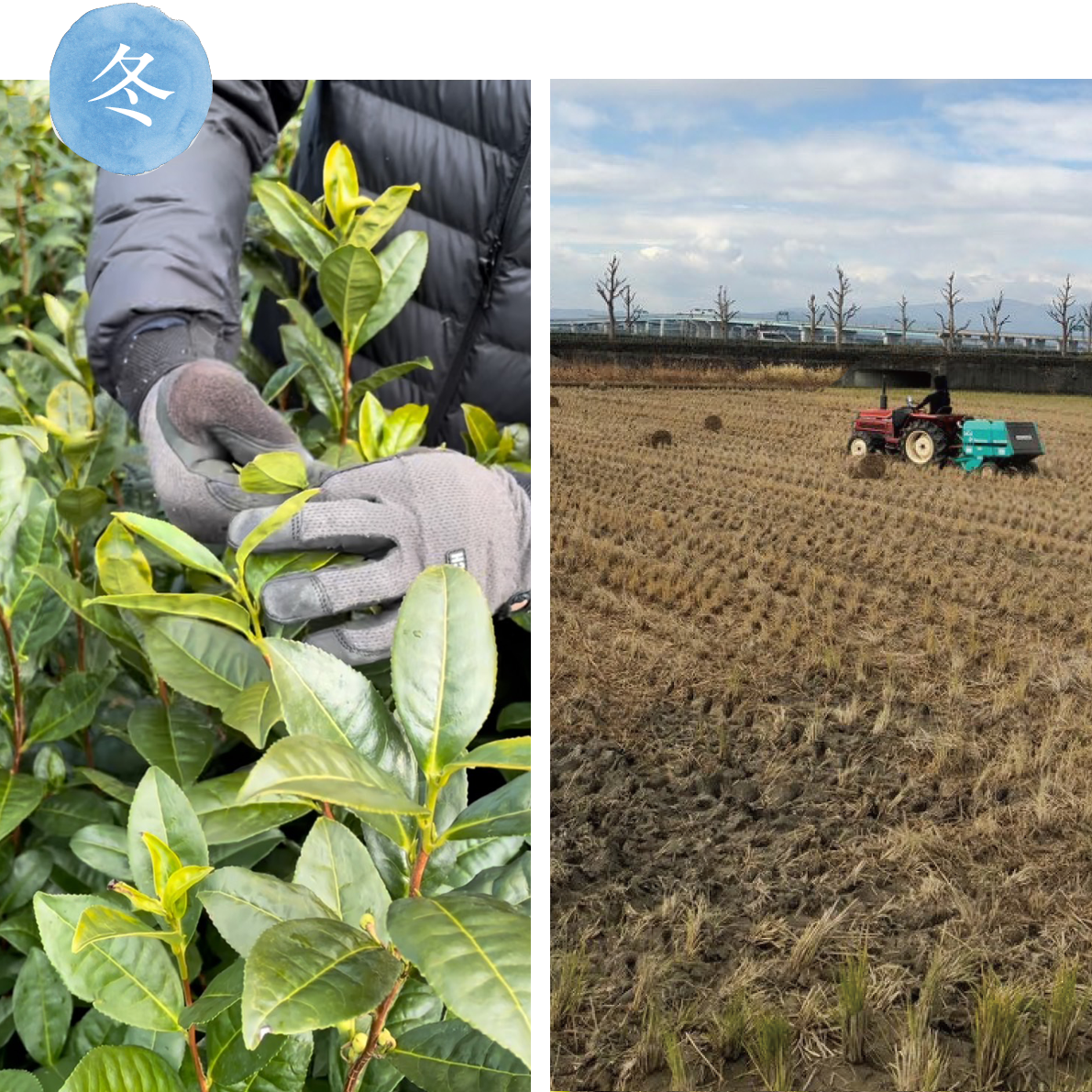
WINTER
Bud Pinching and Straw Collecting
Winter's customary task is "bud pinching," which promotes the growth of side shoots by removing the top buds. This results in the unique naturally shaped tea bushes that sprout new buds from the base in spring. Because the tea field is massive, we do this bud pinching with the entire family. Another important winter task is collecting straw, which is used for drought prevention and weed control in the tea gardens during the summer.
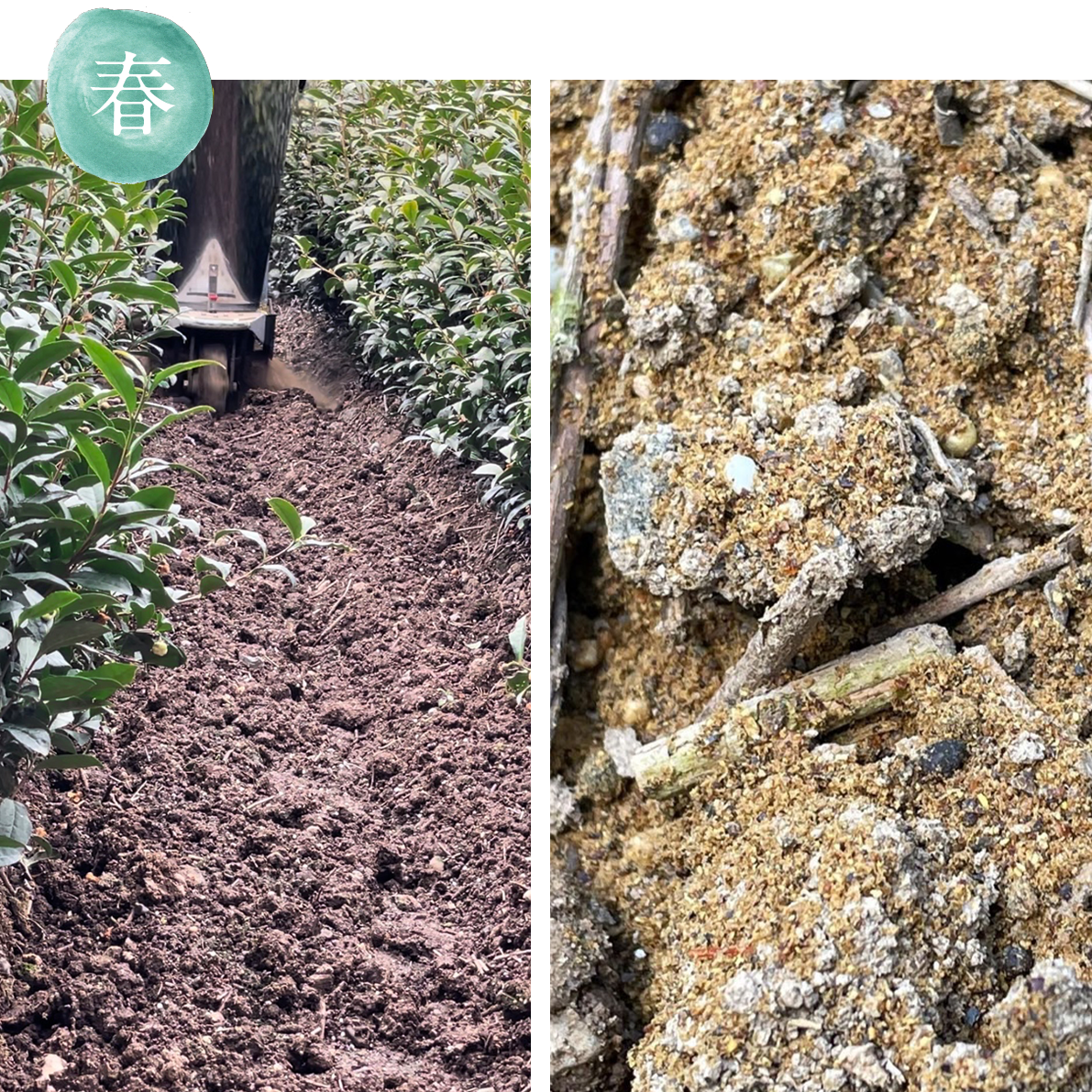
SPRING
Fertilizing
In early spring, we apply our homemade organic fertilizer, which contains fish meal and brown sugar. As new buds begin to sprout, we cover the tea fields with Kanreisha. Depending on the weather, temperature, and the condition of the new buds, we adjust the Kanreisha with single or double layers and side covers. Shading the fields encourages the production of the amino acid theanine, resulting in tea leaves with a unique fragrance. And finally, we reach the tea picking season in May.
Fun Facts About Uji Tencha Production
-
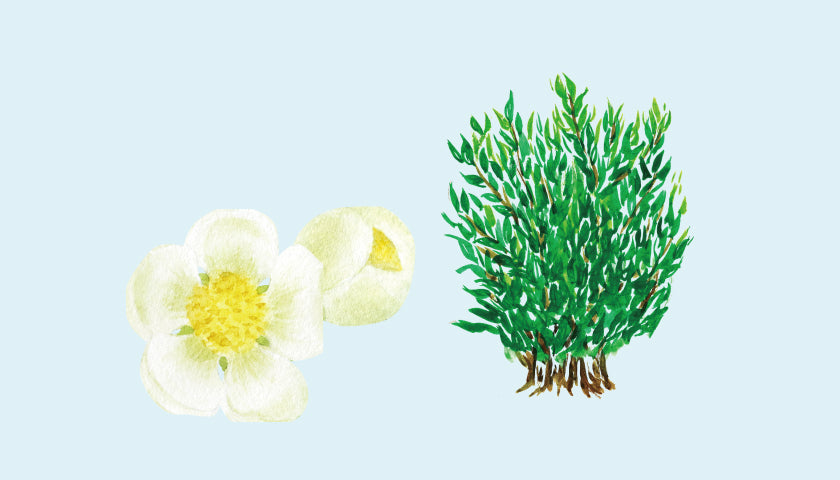
What Kind of Plant is Tea?
The tea plant, a perennial evergreen from the camellia family, has glossy, firm green leaves and blooms white flowers in autumn.
-

Types of Tea
The type of tea is determined by the differences in cultivation and processing methods. When growing tea leaves, they are covered by a shade net, harvested, steamed, and then dried by using a unique tencha roaster called “Tencharo”. This process produces what is known as “Uji Tencha”.
-

Various Roles of the Covering
The covering in the tea fields is not only used when new buds sprout but also used in an active role throughout the year, such as protecting the tea bushes from the strong summer sun and frost damage. We manually open and close Kanreisha daily, monitoring the weather and the condition of the tea bushes to control the state of the tea fields.
-
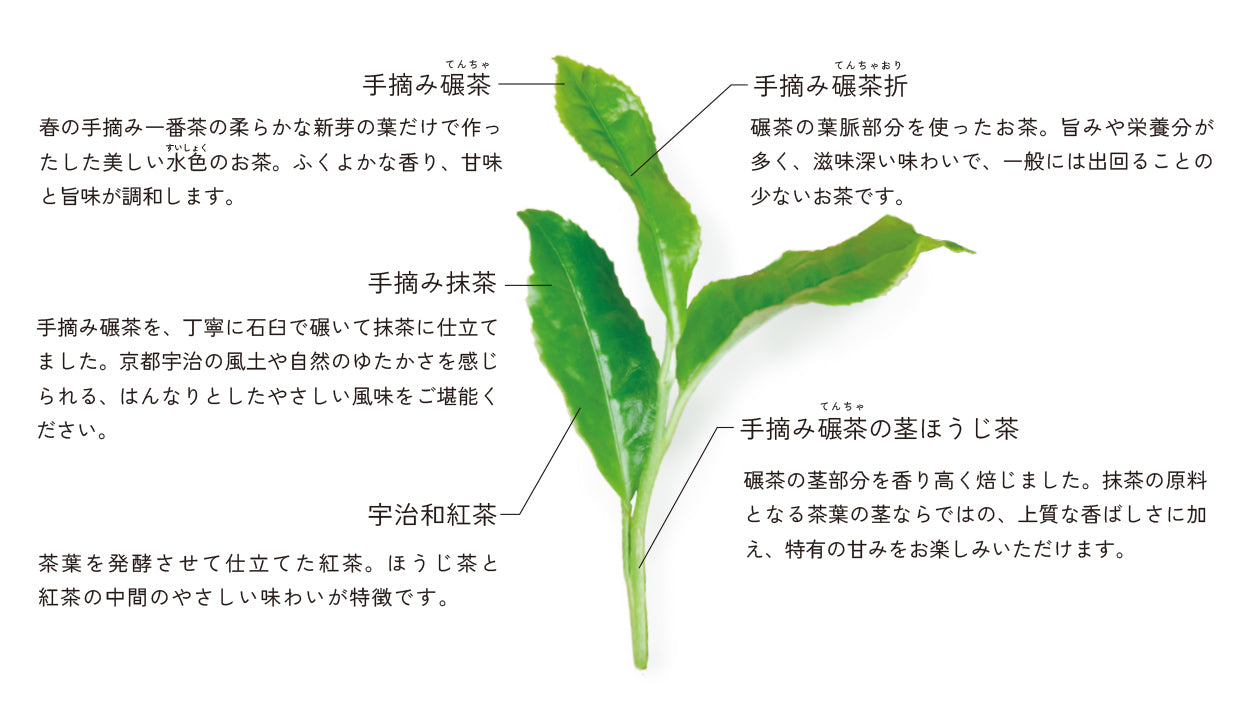
Tea Leaves, Parts, and Types of Tea
All parts of tencha can be enjoyed in various ways. We aim for you to savor the whole tencha grown in our own tea gardens and processed in our own tea factory.The tea leaves are handpicked in our own tea garden and meticulously processed in our tea factory with the hope for customers to savor the full flavor of our tencha, which is carefully cultivated to benefit fully from the richness of the local climate.
How We make Good Matcha and Tencha
Hand-picked new buds undergo many steps to become tencha and matcha. Here's a look at the process in Hasegawa-Ei Seichajyo.

PICKING
"TSUMI"
Tea picking starts in May and is a once a year event. “Tsumiko”, who specialized in handpick Tencha leaves, carefully assess the condition of the young tea leaves, which have a short optimal harvesting period. They feel the thinness and elasticity of the leaves with their fingertips, and meticulously handpick only the tender new buds, one by one. It's a moment of gratitude for the tea bushes that have been nurtured with care throughout the year.
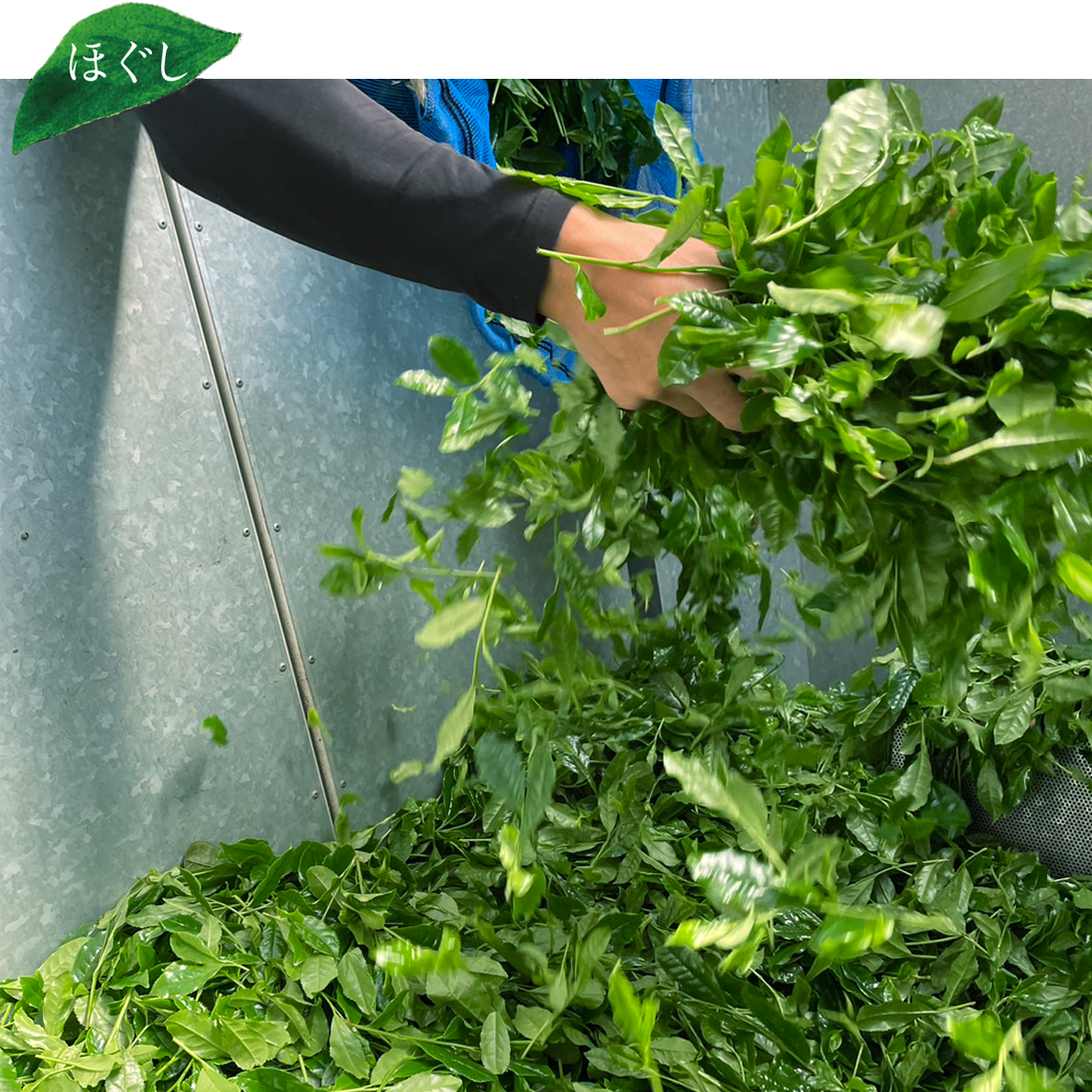
SEPARATING
"HOGUSHI"
The leaves begin to deteriorate once picked, so immediately transported to the tea factory, where they are spread out and separated into containers. These containers are ventilated to prevent the new leaves from deteriorating or wilting. The freshly picked buds are placed into the “Nagashi”, first stage of the tea factory process, where they are further separated and sent to the next process.
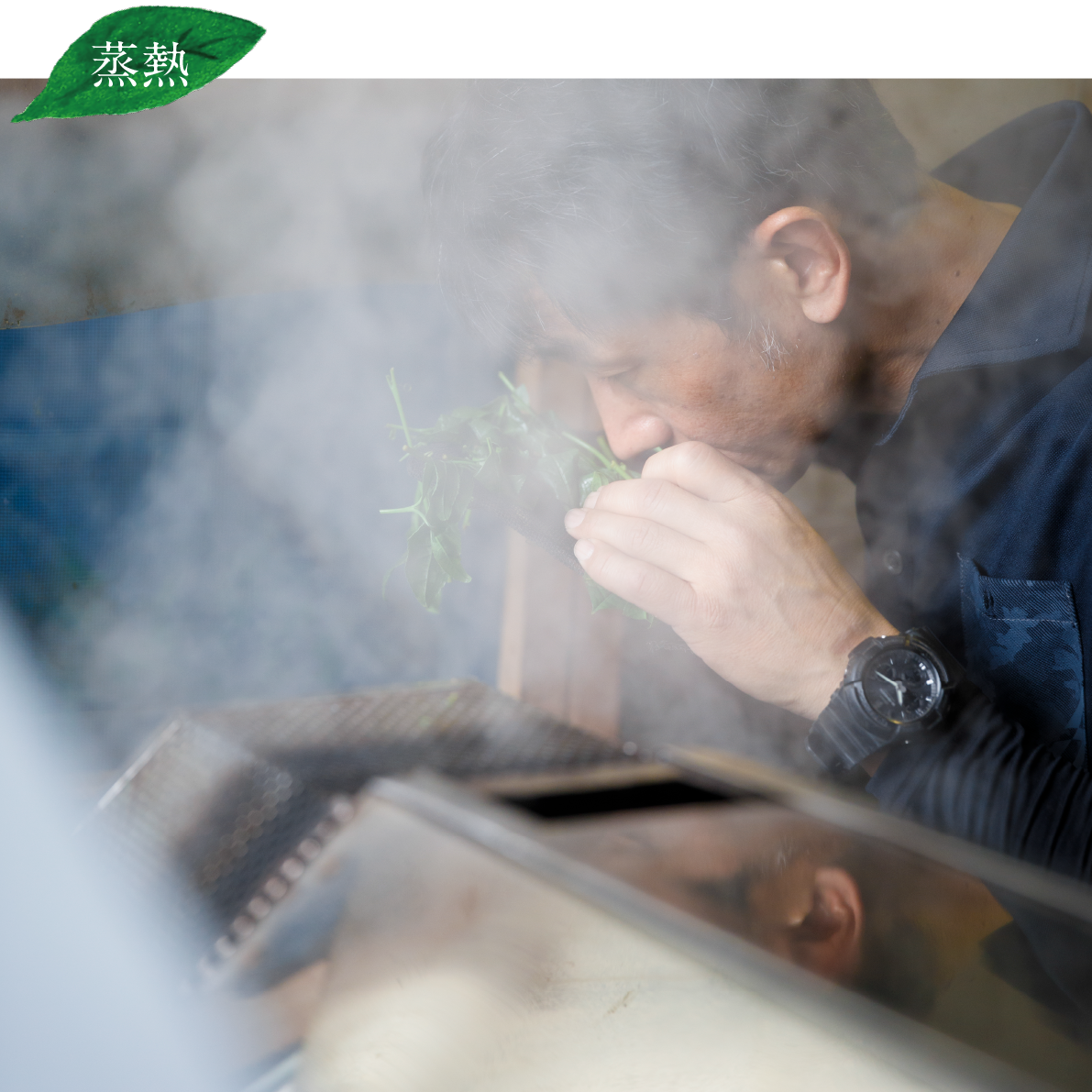
STEAMING
"JYO-NETSU"
The separated new leaves are steamed depending on their condition. This steaming process is a crucial step in the traditional cultivation of Uji. The optimal steaming is determined by the smell and color of the steamed leaves, using all five senses. This delicate balance of steaming time is critical to ensuring the success of the hard work.
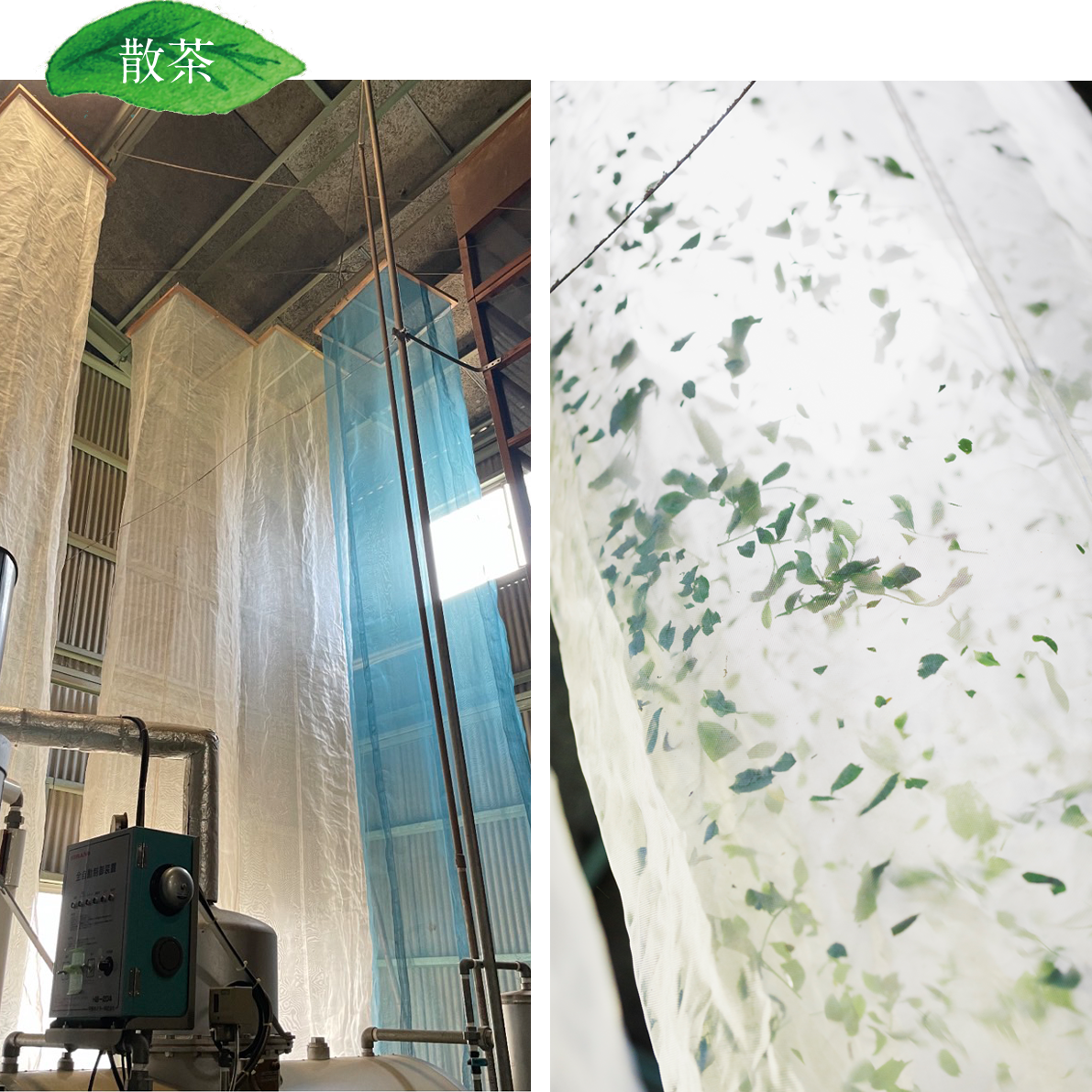
SPREADING
"SAN-CHA"
The steamed leaves are blown up with wind power in a cooling machine for separation of Tea leaves covered with a 5-meter-high net called an "Andon." In order to prevent discoloration, this process quickly makes the leaves cooler, spreads them out, and removes excess moisture.
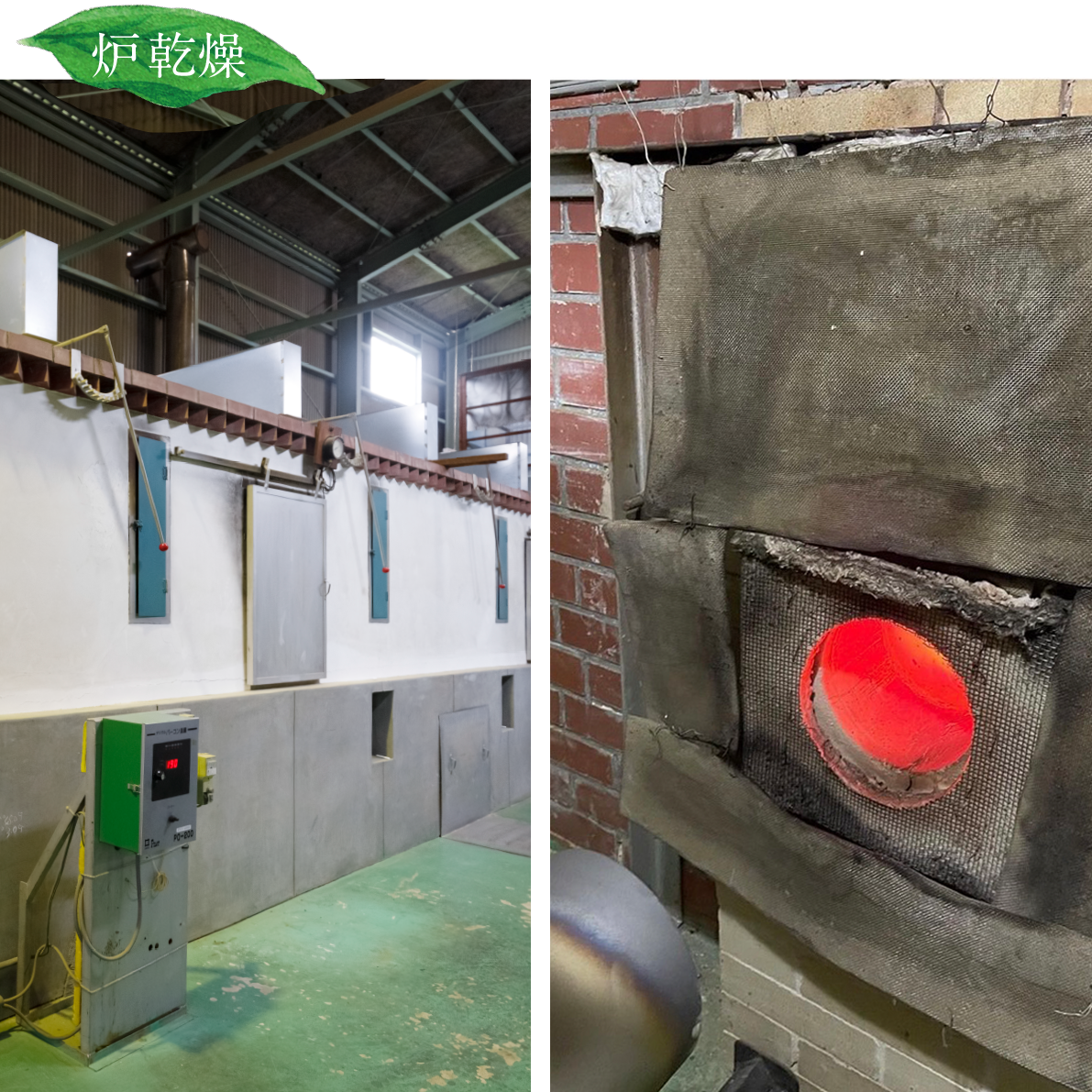
ROASTING
"RO-KANSOU"
The leaves are placed in a 15-meter-long tencha roaster, which has three tiers of belt conveyors inside, and are dried at 180-200°C for about 20 minutes. Not a hot air drying process but this unique drying process with the roaster, is one of the conditions of a defining characteristic of "Uji Tencha".
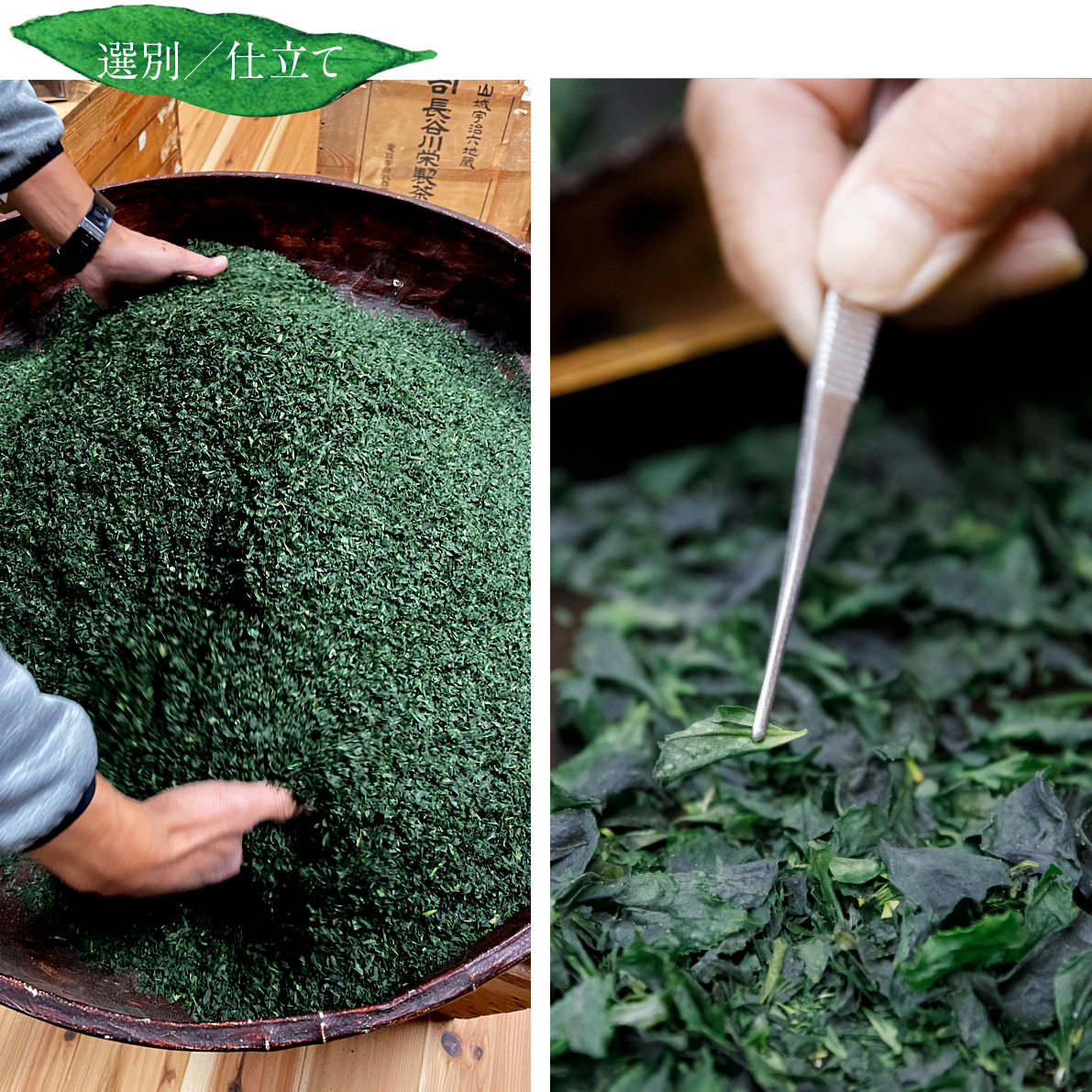
SELECTION - FINISHING
"SENBETSU" / "SHITATE"
Stems and fine veins are manually removed one by one. The leaves are processed into "Tencha," the veins into "Tencha-ori ", and the stems into "Kuki-Hojicha". Leaves that are yellow or too layered to grind in a stone mill are repurposed for other teas or incense and delivered to customers in a different form.

COMPLETION OF TENCHA
Completion of Tencha
After carefully removing all the veins, we have "Tencha" made only from thin leaves.Tencha is not rolled by hand, the leaves retain a unique shape that is not narrow. The leaves are light, fluffy, and dark green. The brewed tea has a beautiful, transparent green color, a rich aroma, and a pleasant balance of umami and sweetness.

GRINDING
"HIKI"
Grinding tencha with a stone mill produces matcha. Hand-picked tea leaves are very delicate, and it would have a very different flavor and color depending on how they are ground even if it uses the same ingredient. It takes one hour to produce only 40 grams of matcha. The grinding process requires constant attention because the taste can be changed if the stone mill overheats. We grind the matcha carefully, ensuring it tastes as delicious as possible.

COMPLETION OF MATCHA
Completion of Matcha
Once the tencha is ground with a stone mill and sifted to adjust the particle size, the hand-picked Uji matcha is finally complete. The matcha has a vibrant, deep green color and a rich, elegant flavor with a lingering aroma. It is a special matcha to enjoy with all five senses.
Recommended Matcha and Tencha Products from "Chaho Yutoha"
We create our products from hand-picked tea leaves grown in our tea gardens and processed in our own tea factory. Enjoy the tencha products from Hasegawa-Ei Seichajyo.
- Hand-picked Matcha
- Handpicked Tencha (Pre-milled Matcha Tea Leaves)
- Handpicked Tencha-Ori (Matcha Tea Leaf Veins)
- Handpicked Tencha Stem Houjicha (Matcha Tea Leaf Stems)
- Uji Black Tea (Made with Handpicked First Flush Leaves)
- Green Tea Mixed with Handpicked Matcha Powder
- Green Tea Mixed with Roasted Rice and Handpicked Matcha Powder
- Handpicked Matcha Powder Mixed with Sugar
- Handpicked Matcha Powder Mixed with Sugar x Strawberry

